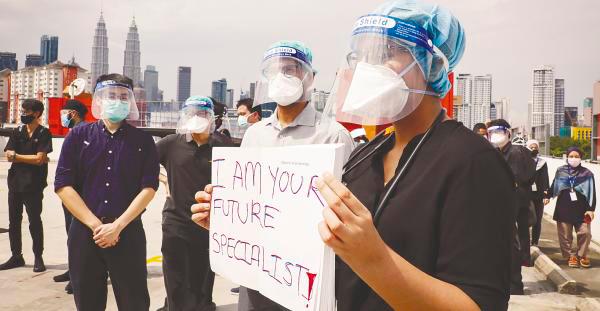THE poorly conceived policies of the Health Ministry, especially the 2016 contract system, are the root cause of the current “perceived shortages” of junior medical doctors. Contrary to some suggestions, this is not a new problem.
Recently, a write-up by a frustrated medical officer implies that the healthcare system is teetering on the brink of collapse. However, the writer does not offer any remedies for the issue.
In an interview, I proposed several ideas to tackle the acute shortage of house officers in university hospitals.
The approach involves holistically circumventing the silo operations of the Health Ministry and Higher Education Ministry. This includes harmonising the distribution of house officers and medical officers, addressing salary concerns for junior doctors, rectifying the maldistribution of the healthcare workforce and reviewing the parallel pathway and Master of Medicine programmes.
Here are some insights on the issue of maldistribution of the healthcare workforce.
The recommended ratio of doctors to the population by the World Health Organisation is 1:400. However, as of 2021, the ratio stands at 1:420. This indicates that, in terms of numbers, we are not desperately short of doctors.
Malaysia boasts a ratio of 2.4 doctors for every 1,000 individuals. This compares favourably with other Asean countries, where Singapore, Brunei, Thailand and Indonesia have ratios of 2.7, 1.6, 0.9 and 0.6 doctors per 1,000 population, respectively.
However, there is a significant disparity in the distribution of doctors within Malaysia, with an over-representation of medical professionals in the Klang Valley compared with rural areas and East Malaysia.
Too many doctors are concentrated in Putrajaya, the state Health Departments, large hospitals, medical and surgical departments and similar institutions.
There is an inequitable and unjust distribution of doctors to effectively meet the healthcare needs of the broader community.
This has triggered the ire of junior doctors who feel betrayed by unfair salary schemes, benefits and unjust career pathways, leading to a brain drain as these professionals seek better opportunities elsewhere.
Many of the challenges in the Health Ministry can be alleviated if the ministry exhibits civility and decency, coupled with a sense of urgency and adherence to best practices, all at virtually zero cost.
Address the maldistribution of the medical workforce within the Health Ministry and collaborate with the task force in the Higher Education Ministry.
The paediatric fraternity has successfully tackled manpower distribution through an ingenious data-driven approach, incorporating doctor-to-workload norms. This methodology can be further enhanced, refined and digitalised for application across other disciplines.
Artificial intelligence and algorithms can be leveraged to fairly and promptly determine the movement and rotation of doctors.
Leveraging data-driven insights through a Health Information System can empower the Health Ministry to more accurately forecast medical manpower needs and efficiently allocate medical personnel.
The Health Ministry should draw inspiration from global multinational corporations on manpower distribution, similar to how we adopted a safety culture from the aviation industry.
Prevent discrimination in the selection process by establishing transparent criteria for promotions, transfers, entry to post-graduate programmes, attainment of scholarships and other avenues. The ministry must promote and embody the principles of a just culture.
Implement a fair and competitive salary scheme along with a transparent promotion schedule for junior doctors. Publicly disclose the selection criteria for permanent and premier grades. Additionally, explore non-financial incentives, such as allowing choices in postings to underserved locations upon completion of service, to enhance overall motivation and satisfaction.
Explore public-private partnerships, such as offering attractive travel fares or priority seats, to facilitate and incentivise the relocation of doctors to underserved areas in rural or East Malaysia.
The monumental task of the health minister is to ensure that the Health Ministry, Higher Education Ministry, Finance Ministry and Public Service Department act promptly and fairly in tackling the crisis of declining medical human resources and its adverse effects on healthcare services.
The worrisome dissatisfaction index and attrition rates within the healthcare human capital must be urgently addressed with compassion, care and finesse.
Comments: letters@thesundaily.com









